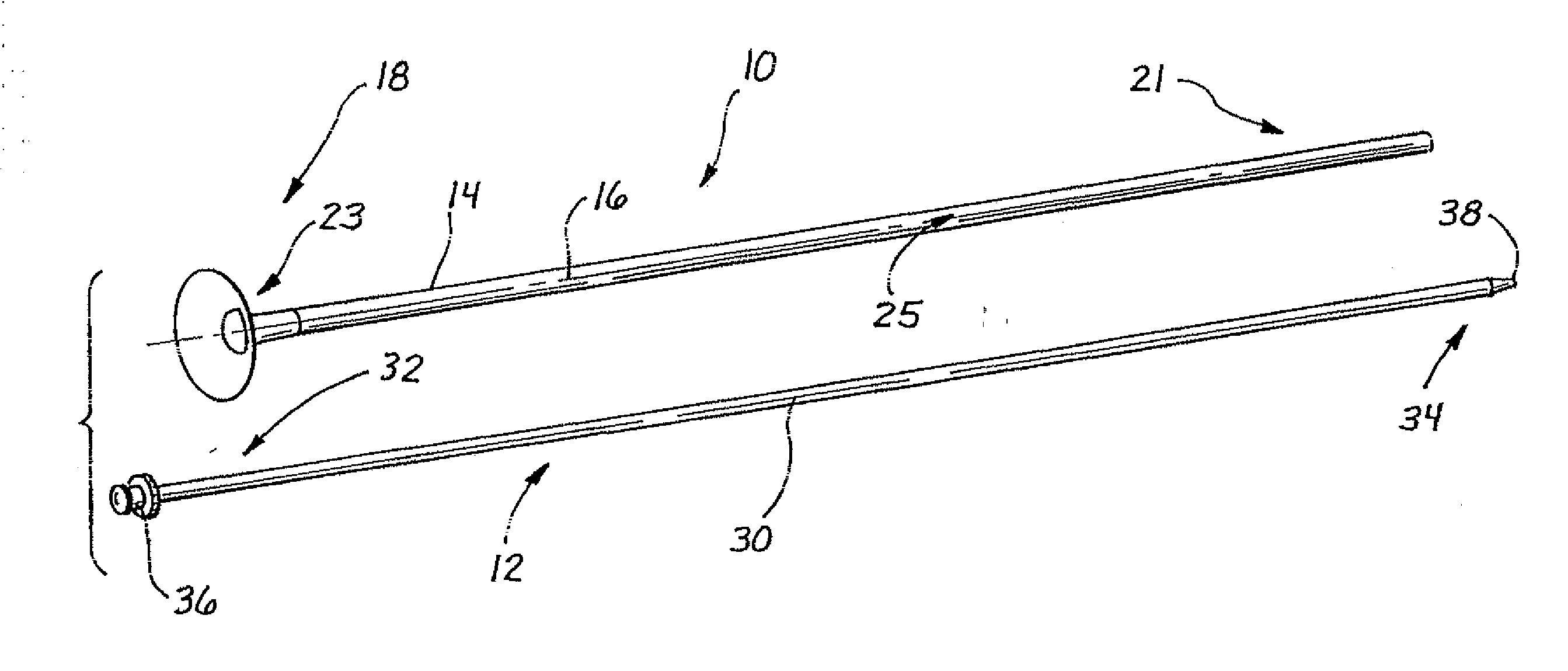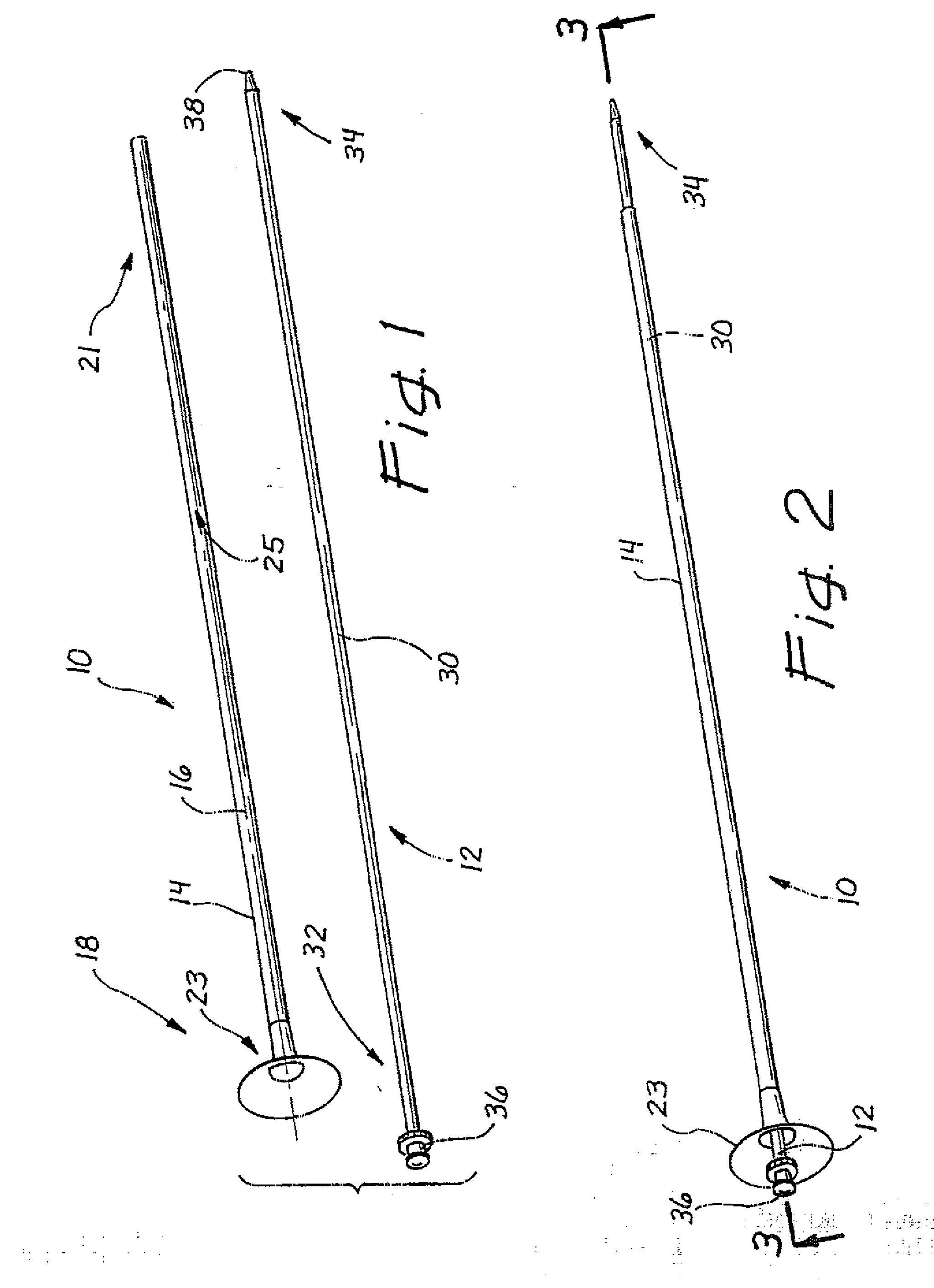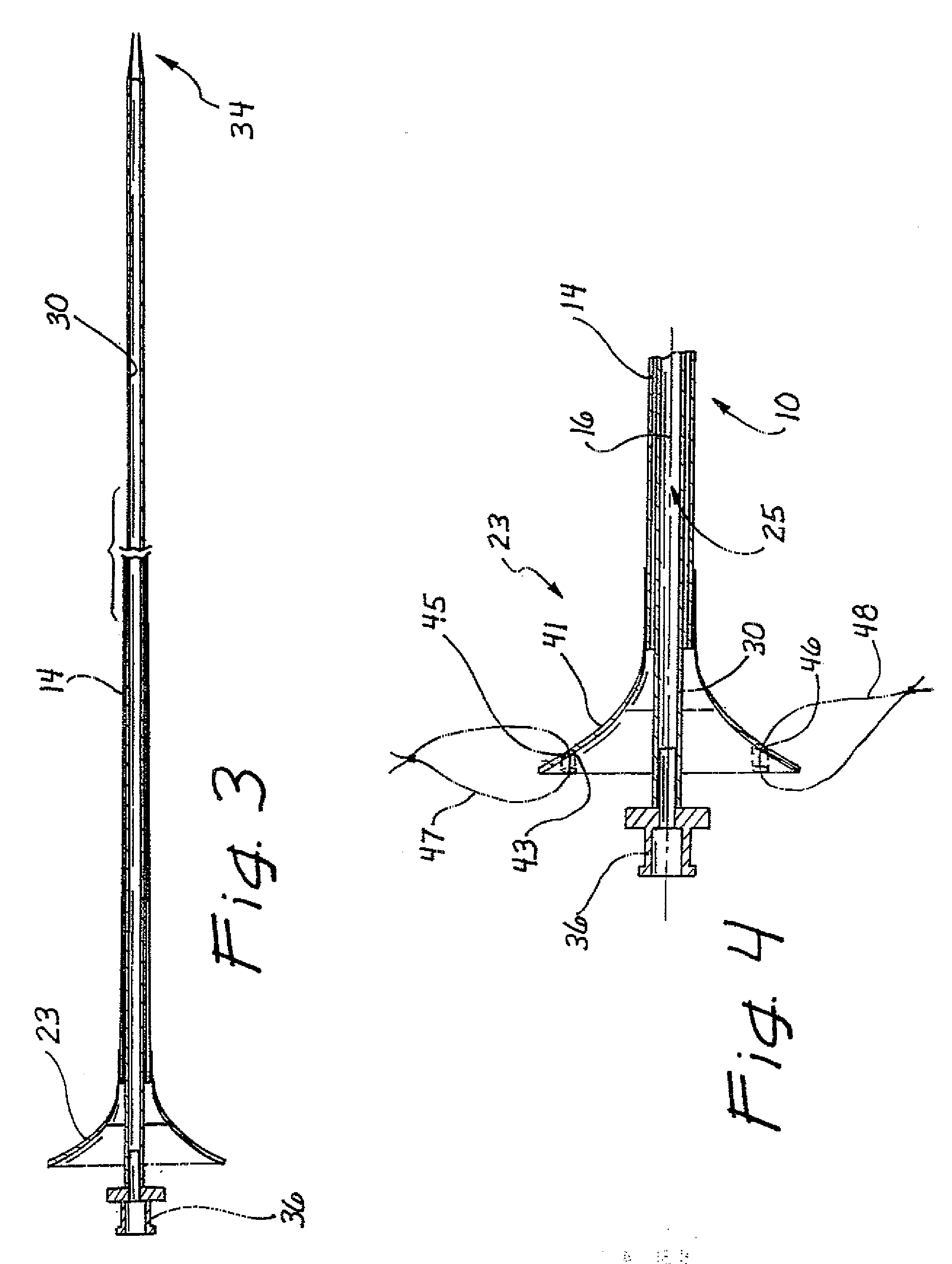Ureteral access sheath
a technology of ureteral access and guideway, which is applied in the direction of suction devices, catheters, intravenous devices, etc., to achieve the effect of facilitating the stationary orientation of the sheath, facilitating the use of instruments, and reducing the risk of ureteral enlargemen
- Summary
- Abstract
- Description
- Claims
- Application Information
AI Technical Summary
Benefits of technology
Problems solved by technology
Method used
Image
Examples
Embodiment Construction
[0024] A ureteral access sheath is illustrated in FIG. 1 and designated generally by the reference numeral 10. In FIG. 1, the sheath 10 is illustrated in combination with a separate, but associated, dilator or obturator 12. The sheath 10 has the general configuration of an elongate tube 14 having an axis 16 which extends between a proximal end 18 and a distal end 21. A handle 23 is disposed at the proximal end 18 of the tube 14 and provides access into a working channel 25 of the tube 14.
[0025] The obturator 12 will typically have the configuration of an elongate rod 30 extending between a proximal end 32 and a distal end 34. A knob 36 is disposed at the proximal end 32 and a tapered tip 38 is formed at the distal end 34. The obturator 12 is adapted to be inserted into the working channel 25 of the sheath 10 with the knob 36 extending proximally of the sheath 10, and the distal end 34 extending distally of the sheath 10. This operative position of the obturator 12 within the sheath...
PUM
 Login to View More
Login to View More Abstract
Description
Claims
Application Information
 Login to View More
Login to View More - R&D
- Intellectual Property
- Life Sciences
- Materials
- Tech Scout
- Unparalleled Data Quality
- Higher Quality Content
- 60% Fewer Hallucinations
Browse by: Latest US Patents, China's latest patents, Technical Efficacy Thesaurus, Application Domain, Technology Topic, Popular Technical Reports.
© 2025 PatSnap. All rights reserved.Legal|Privacy policy|Modern Slavery Act Transparency Statement|Sitemap|About US| Contact US: help@patsnap.com



